Paper Types Explained: Guide to Printing Paper Weights & Finishes
Choosing the right paper is crucial for creating professional and eye‑catching print projects. Whether you’re exploring types of paper for marketing materials, stationery or packaging, this guide demystifies terms like gloss, satin, matte, dull coated, wove, laid, C1S, C2S and more. Learn how finishes, weights and textures influence color reproduction, durability and tactile experience, and discover which paper type best suits your needs. If you have questions or need samples, our team at Printing Partners is ready to help.
Coated vs Uncoated overview
Coated paper: A smooth, sealed surface reduces ink absorption and makes colors pop. Finishes range from high‑shine gloss to low‑sheen matte. Coated paper is ideal for photographs, brochures and other marketing materials where sharp images and vibrant colors are essential.
Uncoated paper: Without a glossy coating, the sheet retains a natural texture and absorbs ink more deeply. It’s the most common office paper, perfect for documents that need to be easy to read and write on, such as reports, letterhead and forms.
Coated Paper Types
Coated paper, with its glossy texture, improves print quality by providing clear details and reducing ink spread. Its special coating stops the material's fibers from soaking up ink. This makes images and text look sharp and bright, as though they have just come off the printer.
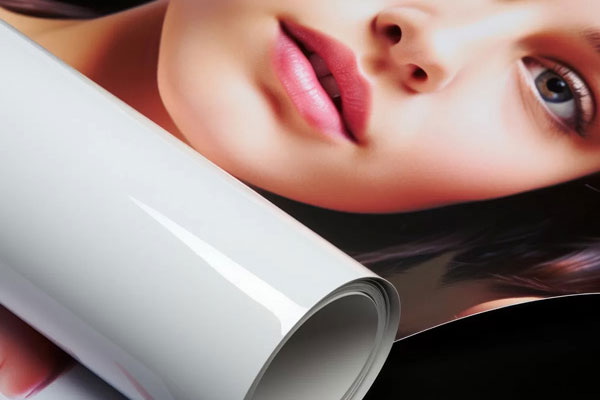
Gloss Paper
A gloss finish makes colors pop and sharpens images, perfect for high-quality photos and eye-catching marketing materials. The special coating prevents ink absorption, ensuring that images appear crisp and vibrant.
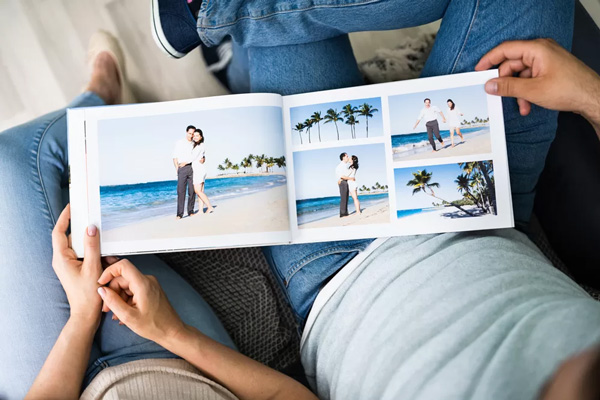
Satin Paper
Satin offers a perfect balance between gloss and matte, providing vivid colors with a lower reflection rate. This finish is ideal for creating professional book covers and high-end brochures. Perfect for clear images without excessive glare.

Matte Paper
For situations where minimal glare is essential, matte is the preferred choice. Its non-reflective surface works well for materials that people handle frequently, like reports and posters. This finish enhances readability by reducing eye strain under direct light.
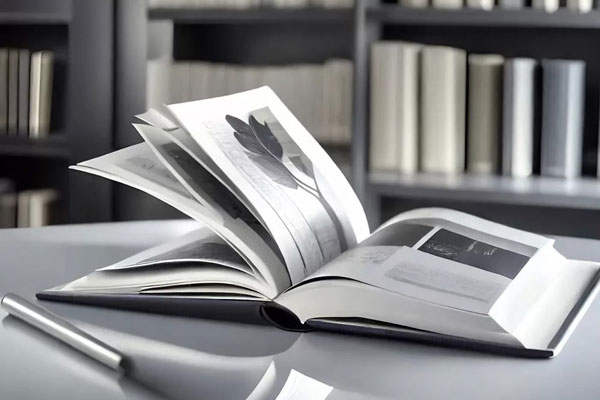
Dull Coated
Dull coated finishes strike an ideal balance by offering a subtle luster that captures attention without overwhelming glare. This finish is perfect for projects that require a touch of elegance without a high shine. It works well for corporate reports and art books.

C1S
One Side Coated (C1S) has a coating on one side that provides a smooth and glossy finish. Perfect for situations where the outside appearance is important, but the inside does not need to be as fancy.
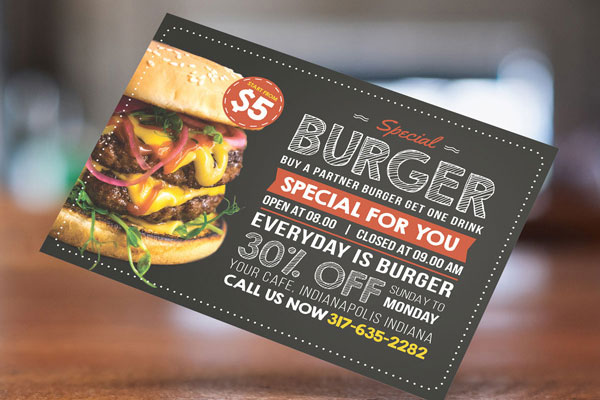
C2S
Paper called C2S (also known as Coated 2 Sides) has a coating on both sides. This makes it ideal for high-quality marketing materials such as brochures and postcards. This attribute ensures vibrant colors and fine details on both sides, enhancing the overall aesthetic appeal.
Uncoated Stocks
People like uncoated paper because it has a natural finish. Perfect for writing and printing without any added shine. This material absorbs ink more deeply, resulting in a softer visual effect. Great for business stationery, books, and any project where a tactile feel and easy readability are important.

Wove or Smooth Paper
Wove paper, with its smooth finish, ensures that printed materials look impressive. Its construction provides both durability and flexibility, ideal for creating professional-grade prints. Additionally, its flexibility is well-suited for digital printing process. The substrate's surface holds ink effectively, reducing the risk of smearing or fading.
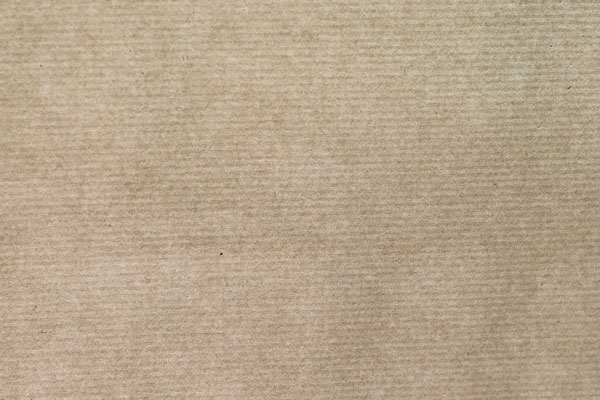
Laid Paper
Laid paper is a unique and elegant textured finish, characterized by criss-cross ribbed lines on its surface. This quality makes it highly suitable for crafting distinct stationery items such as letterheads, envelopes, and business cards, enhancing the professionalism of corporate communications.

Linen Paper
Linen paper is renowned for its textured, fabric-like finish that adds a touch of sophistication to any document. Ideal for business stationery, resumes, and invitations, linen sheet stands out with its high-quality feel. If you're considering linen finish for printing, remember it's best used where a touch of elegance is essential.

NCR Carbonless
NCR (No Carbon Required) Carbonless Forms are a modern solution for making instant copies of documents. These forms have a special coating that uses pressure from a pen or printer to create duplicates. They are great for making multiple copies of invoices, receipts, and order forms without using a messy carbon slipsheet.
Eco-Friendly FSC® Certified Paper
At Printing Partners, we understand the importance of sustainability in printing. Our FSC® Certified Paper options reflect our commitment to environmental stewardship while ensuring high-quality print results. FSC (Forest Stewardship Council®) certification means that the paper is sourced from responsibly managed forests that provide environmental, social, and economic benefits.
FSC certified papers are ideal for businesses and individuals looking for eco-friendly printing solutions without compromising on quality. Whether you are producing corporate reports, marketing materials, or custom packaging, choosing FSC certified paper helps promote sustainable forest management and supports your green initiatives.
Specialty Papers
- Mirror Paper: (18pt C1S Brilliance Silver Metallic Polyester shown here) has a shiny finish that looks like a mirror. Perfect for making visually appealing presentations and premium business cards. The luxurious sheet catches people's attention with its design. Ideal for creating high-quality printed materials.
- Recycled: Ideal for eco-conscious projects, made from post-consumer waste.
- Metallic: Adds a shimmering luxury to invitations and upscale cards.
- Translucent (Vellum): Provides an elegant, semi-transparent finish for overlays and special projects.
- Water-Resistant/Waterproof: Essential for materials used in outdoor or damp conditions.
- Security: Offers protection for important documents against forgery.
- Kraft: Valued for its durability and natural look, perfect for eco-friendly packaging.
- Self-Adhesive: Used for convenient labels and stickers that require easy application.
- Synthetic Polyester and Magnet-Backed: Durable choices for challenging environments and promotional materials that need to adhere to metal surfaces.
Paper Weight
The sheet’s weight is a key factor that impacts the durability, handling, and print quality of your projects. It is often measured in two ways: pounds and points.
Pounds (#):
This measurement indicates the weight of a ream (500 sheets) of paper cut to a standard size. For instance, a text weight might range from 60 to 100 pounds, suitable for the inner pages of books and brochures, indicating a lighter, thinner paper.
Points (pt):
One point equals 1/1000th of an inch. Paper described as "12 pt" is 0.012 inches thick. This measure is typically used to describe the thickness of cardstock or cover stock, providing a direct indication of paper stiffness and durability. Higher point numbers mean thicker, sturdier paper.
Measuring Paper Weight
Accurate measurement of paper thickness ensures that you select the right paper for your needs. Tools like calipers, thickness gauges, and micrometers are essential for measuring paper thickness precisely, confirming that the paper meets your project's quality standards.
Text Weight
Text weight ranges from 70# to 100#, thicker than standard writing weight but lighter than card stock, perfect for many uses. The 70# type is great for brochures and catalogs; thick enough to stop ink from bleeding through, vital for printing on both sides.
The 80# variant, is heavier, suits premium magazines and corporate reports that require a high-quality feel. The heaviest, 100# text weight, has a substantial feel, ideal for book covers and upscale marketing materials. As the weight increases, so does the thickness and opacity, providing a wide variety of options for different project needs.
Writing Weight
Writing weight, usually used for official letterheads and stationery, commonly includes 24# and 28#. The 24# strikes a balance between strength and usability, favored for business letterheads and professional documents. In contrast, the 28# is heavier than 24#. Perfect for upscale impressive look. This weight can feature a watermark, adding a sophisticated touch.
For everyday business communication, 24# paper works well, offering a professional appearance without being too thick. For more formal or high-level communication, the sturdier and more refined 28# paper is the choice. Writing weights are adaptable and fitting most printing methods. They also serve well for a range of personal and professional communication needs.
Cover Weight
Cover stocks, with their heavy weight and stiffness, are ideal for durable and high-end applications. Available in weights such as 65#, 80#, 100#, 120#, and 12pt, they are much thicker and stiffer compared to text or writing weights. Their robustness reduces folding and creasing, giving the final product a solid and luxurious feel.
65# cardstock is suitable for items such as report covers, business cards, and postcards. It's sturdy yet not overly thick.
For heavier types of paper, 80# and 100# cover stocks are better. They're thicker and firmer, ideal for high-quality book covers, fancy business cards, and invitation cards. The heaviest types, 120# weight and 12pt stocks. These are best for luxury items like high-end packaging and heavyweight business cards, where you need the most strength and a luxurious feel.
The Importance of Texture: Enhancing Your Print's Feel
Paper texture can significantly enhance the tactile experience of your printed materials. Textures like paper texture linen and silk paper printing options provide a unique feel that can make your materials stand out. Whether you're looking to impress with business cards or want your wedding invitations to be memorable, the right texture can make a substantial difference.
Sheet Opacity
Understanding Opacity in Paper: Opacity refers to how much print shows through from one side of the sheet to the other. It's an essential characteristic to consider, especially when printing on both sides of the paper. Here's how different levels of opacity suit various printing needs:
- High Opacity: Sheets with high opacity are perfect for double-sided printing as they prevent text and images from showing through the opposite side. Ideal for documents such as reports, brochures, and manuals where clarity and professionalism are crucial.
- Medium Opacity: Suitable for single-sided prints and standard office documents. These sheets offer a balance, ensuring that the print remains clear without the added cost of high opacity materials.
- Low Opacity: Often used for artistic purposes or specific effects, low opacity sheets allow some show-through and can be used creatively for overlays or nuanced design elements.
Frequently Asked Questions About Paper Types
Popular options include gloss, matte, satin, dull coated, and uncoated sheets. Specialty finishes such as linen, laid, or textured stock are also used for premium projects. Each surface affects how ink sits on the sheet, influencing sharpness, readability, and overall impact.
Standard uncoated bond is usually the lowest cost. It is widely available, efficient for high-volume jobs, and ideal when the emphasis is on function rather than luxury presentation.
Thicker sheets are often referred to as cover weight or cardstock. This sturdy material is commonly chosen for postcards, business cards, and covers because of its durability and professional feel.
Matte coatings provide a smooth, non-glare surface. They soften colors slightly and are comfortable for pieces that will be handled often, such as manuals or reading materials displayed under bright lighting.
Basis weight and caliper (thickness) affect both tactile quality and durability. Heavier sheets resist curling and wear, making them suitable for menus, covers, and long-lasting collateral. Lighter sheets reduce mailing costs and are practical for everyday use.
Cardstock is substantially thicker and stiffer than standard office paper. While copy sheets are intended for quick prints or internal use, cardstock withstands handling and is designed for presentation pieces, packaging, and event materials.
No. Modern recycled stocks can be as bright and smooth as virgin fiber sheets. Texture or slight color variation may occur, but most recycled options now rival traditional products while reducing environmental impact.
Acid-free and lignin-free stock is recommended for long-term preservation. These sheets resist yellowing and deterioration, protecting artwork, legal files, or certificates intended to last decades.
Multipurpose stock designed for laser and inkjet equipment works best. It balances opacity, stiffness, and moisture control to minimize jams and deliver consistent performance across printers and copiers.
Gloss coatings intensify images by allowing ink to sit sharply on the surface, producing high contrast and vivid colors. This is why gloss is often used for marketing brochures, catalogs, and photographs.
Watermarks add authenticity and security. They are embedded during manufacturing, making them difficult to counterfeit. Security-grade watermarked sheets are commonly used for diplomas, legal contracts, and branded stationery, offering both protection and a professional touch.
Consider finish, brightness, and thickness. A heavier gloss or satin sheet conveys luxury and makes colors pop, while matte provides better readability for text-heavy layouts. Brightness also affects how sharp and vivid images appear.
Brightness measures how much light a sheet reflects. Higher brightness levels produce crisper contrast and more saturated colors. A bright sheet enhances readability and visual punch, especially for image-driven designs.
Opacity is key. A denser sheet prevents show-through of text or images from the reverse side. Many coated and cover weight stocks are engineered specifically for duplex work.
Look for options with post-consumer recycled content, FSC® certification, or made from alternative fibers such as bamboo or hemp. These choices minimize environmental impact while still delivering professional printing performance.
Bond refers to a grade of uncoated sheet that is durable, lightweight, and widely used for office documents. Originally made with cotton fiber for strength, most modern bond is wood-pulp based but still engineered for everyday printing and copying. Common weights range from 20 lb to 28 lb bond (about 75–105 gsm). It is ideal for letterhead, invoices, and forms where readability and runnability in office devices matter most.
Types of Paper Conclusion
Choosing the correct substrate and opacity levels is crucial for achieving the desired results in your printing projects. It ensures that your printed materials look professional, feel right, and convey your message effectively.
If you need help picking a finish, weight or printing tips, please reach out to us for more information. Contact Printing Partners if you have more questions. Our website has useful information for your printing needs. We want you to succeed in printing, and we’re here to help you make smart choices that improve your projects.
About the Author
Kraig Downham is the Marketing Director at Printing Partners, a key player in the offset commercial printing industry. Joining the company in 2005, Kraig has been instrumental in driving advancements in marketing, design, and technology. As a color expert, he is committed to delivering superior quality prints that meet the highest standards. His strong work ethic and dedication, honed during a 10-year journey with 4-H, have made him a pivotal figure in the company. For more about Kraig's professional endeavors, please visit his detailed profile.
- Page updated August 25, 2025
